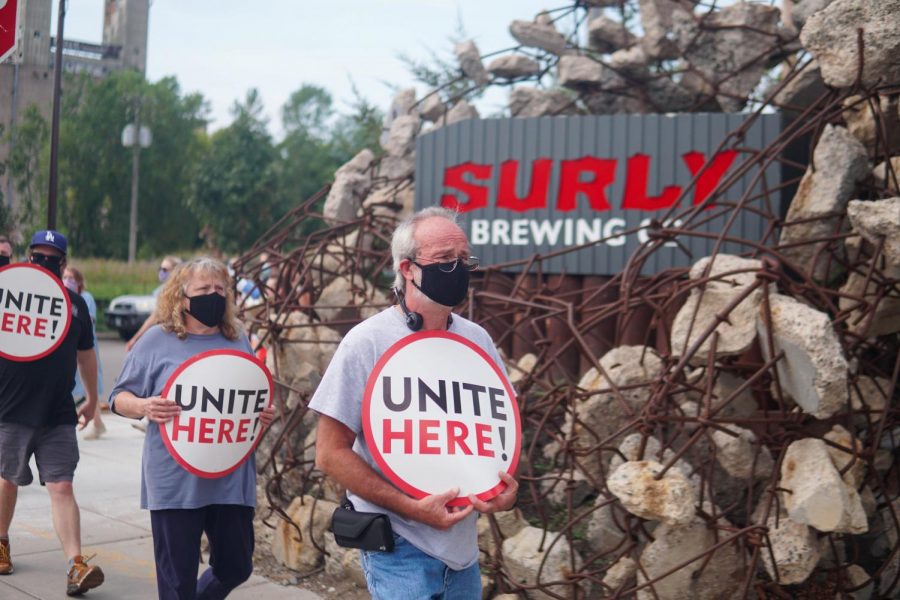As my class got off our school bus outside the anonymous concrete-block building this past Monday morning, we were hit by the intense smell of cow manure. I considered momentarily follow my parents’ example and yell, “smell that fresh country air!” in a southern accent – a staple of Kaplan family road trips when that familiar smell wafted into our car. In the end I decided against it because it was too damn early but also because the air that morning had some weight to it. I was about to walk into a slaughterhouse and get a rare first-hand glimpse of how a cow—that friendly animal we’ve seen grazing on roadsides or at the State Fair—gets transformed into the all-American food: beef.
As it turns out, they were actually slaughtering bison that day. Ironically, the meat would be packed and shipped to the European Union; a creature native to this continent being eaten in the continent where our iconic Holsteins come from. That aside, the experience was no less heavy. Lorentz Meats, based in Cannon Falls, MN is a USDA organic certified slaughterhouse and meat packing plant that services both small local farmers and larger farmers, such as Thousand Hills Cattle – the supplier of Café Mac’s local, grass-fed beef. If you eat a hamburger in Café Mac now and then, it’s entirely possible that you’ve had a burger that was made with the help of Lorentz Meats.
And I’m glad to report that that should give you at least some comfort. Lorentz is clearly a business that takes the welfare of its animals and the quality of its meat very seriously. For example, my class Food Environment and Society in 20th-Century America was able to take a field trip there. Our tour guide, Denise Perry, told us that this is virtually unheard of in the industry. “Even as a grad student [in animal science], you still had to know someone” to get an inside look at a meat packing plant. This transparency, limited as it was to one window looking out on the packing floor and another onto the killing floor, speaks to the fact that they are not trying to hide anything.
Another source of solace is that the plant was designed in consultation with famous animal welfare advocate and psychologist, Temple Grandin. Grandin’s breakthrough work has led to some fundamental ways that conscientious plants can operate. One of the major aspects of these designs is separating live cattle from the cattle entering the “knock box”, where animals are knocked unconscious with a gun and then killed by severing the major arteries. In a traditional layout, the next cow in line sees it all happen, which is stressful enough to watch when you’re not in the position of the animal. At Lorentz, and at other places that Grandin has certified, no animal sees another animal’s death, which is both more respectful to the animals and better for the meat.
They also seem to show a lot of respect for their workers. If you’ve seen films like Food Inc., you know that large corporate slaughterhouses have extremely high turnover rates and pay their workers next to nothing for a job that is extremely tolling on workers’ bodies because of its physical intensity and risk of injury. While Lorentz workers are not unionized and many are hired through temp agencies, within a year an experienced packer can make up to $20 an hour there including health and dental benefits. They also strive to produce skilled workers by rotating people throughout the plant. This way, they really learn the trade of butchering rather than just how to make one cut on a piece of meat, as is the norm at a major industrial packing plant.
Denise was somewhat unclear on what the actual turnover rate was on the packing floor, but the six positions on the killing floor have virtually no turnover despite the immense stress and strain of the job. This was important to Denise and Lorentz as a company because it is hard to find people who are able to work in that environment. “They are special people,” Denise said in reverence to these valued employees. As for work related injuries, most just come from the physical strain of working in the plant, although our Denise conceded they usually have one “big one” per year – serious injuries ranging from accidental stabbings to losing fingers in machinery.
On Mondays and Tuesdays, the plant slaughters bison – about 45 per day. The rest of the week is devoted to cattle like those from Thousand Hills. On Fridays, local farmers looking to have one or two cattle sold at farmers markets can pay to have their animals dressed too. But despite the local, family business feel to the small plant though, they have taken animals from as far away as Montana, and as mentioned before, ship to Europe. This seems to be a product of the fact that they are catering to such a niche market: the National Cattlemen’s [sic] Beef Association reports that in 2010, USDA certified organic beef only comprised 2.8 percent of total beef volume in the U.S. At the same time, organic beef made up four percent of sales, showing that this stuff is definitely more spendy than your average cow. Bison is by far the most expensive meat they output: Denise says it sells for about 18 dollars a pound, compared to $8 for grass-fed and around five for feedlot beef.
When we were leaving the plant and getting on the bus, we got a glimpse of the bison that were outside in the pen. Although it was sad to see these animals—which I’ve admired in places like Yellowstone and the Badlands—unknowingly awaiting their fate, it was good at least to know that they were in the hands of people that are respectful to them. After all, it’s how they make their living.





Richard Mitchell • Sep 12, 2019 at 2:34 am
yay google is my queen assisted me to find this outstanding website ! .
Oliver Hill • Sep 10, 2019 at 7:56 pm
Nice respond in return of this matter with firm arguments and describing all concerning that.
Piers Parr • Sep 7, 2019 at 7:01 pm
My wife and i have been joyful when Emmanuel managed to do his preliminary research with the precious recommendations he came across from your very own weblog. It is now and again perplexing to simply continually be giving away information and facts which usually people could have been making money from. And we understand we have you to be grateful to for this. The most important explanations you have made, the easy web site menu, the friendships you will give support to create – it is mostly remarkable, and it’s really helping our son and the family feel that this article is thrilling, and that’s especially important. Thanks for all the pieces!